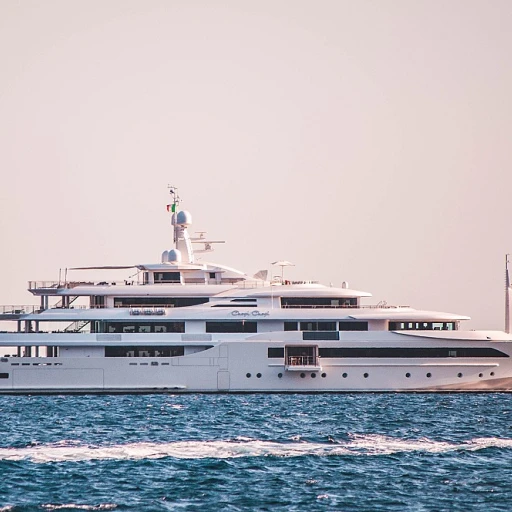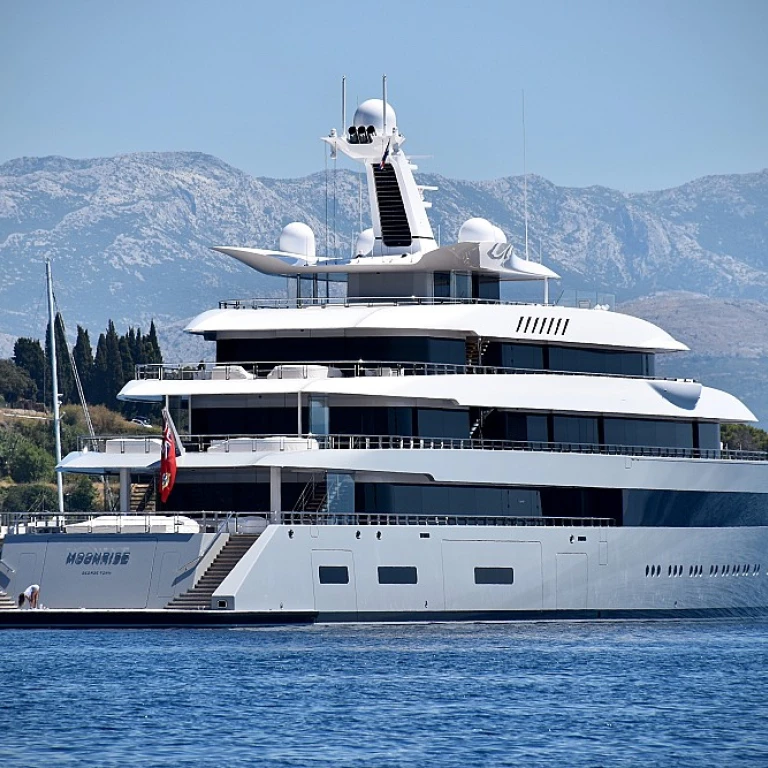The Role of Boat Windows in Yacht Aesthetics
Enhancing Yacht Elegance through Window Design
Boat windows play a pivotal role in defining the aesthetic appeal of a yacht. They are not just functional, serving as points of view and light entry, but also crucial elements that contribute to the yacht's overall design language. The variety of styles – from classic portholes and round shapes to sleek modern sliding windows – allows owners to express individuality and taste, creating a seafaring masterpiece.
The material choice for windows can drastically alter a yacht's aesthetic. Options such as tempered glass and polycarbonate allow for creative use of light and space, each bringing its own visual and performance benefits. Marine windows crafted with precision ensure clarity and durability, offering the best price product solutions without compromising quality.
For seasoned enthusiasts, the wishlist often includes portlight windows and stainless steel frames that complement the yacht's sophistication while withstanding marine environments. The integration of sliding windows and opening portlights not only enhances the yacht's appeal but also improves functionality, offering versatility and ease of use.
A deep dive into the yacht's uniqueness can be found in the way windows are tailored to meet specific designs.
Shinkai Yacht: Exploring the Depths of Luxury and Innovation exemplifies how intricately designed windows contribute to the grander theme of luxury and innovation. With free shipping options available for many ship window designs, ensuring the perfect look for one's yacht is more accessible than ever.
Ultimately, yacht windows are more than mere apertures; they are vital components in crafting a boat's identity, making the right choice of windows a significant aspect of yacht aesthetics.
Material Innovations in Boat Windows
Innovative Materials Transforming Marine Windows
The evolution of materials used in the design of boat windows has been remarkable, offering both aesthetic appeal and functionality. The industry has witnessed a significant shift from traditional glass to more advanced products like tempered glass and polycarbonate. These materials not only enhance the yacht's visual appeal but also contribute to its overall performance.
Tempered glass remains a popular choice in boat windows, especially for its strength and safety features. Its ability to fracture into small, blunt pieces rather than sharp shards makes it an ideal option for marine environments. This is particularly important for ship windows and large porthole windows, where safety is paramount.
Polycarbonate, on the other hand, has emerged as a favorite for its lightweight and durable attributes. Its transparency rivals that of glass, providing uninterrupted views while offering resilience against impact. This makes polycarbonate a leading choice for opening portlights and window marine installations, particularly in regions prone to extreme weather conditions.
Moreover, the introduction of sliding windows and stainless steel fittings in marine window design allows for enhanced flexibility and durability. The wishlist of every yacht designer now often includes these advanced products, striking a balance between style and utility.
As the industry continues to innovate, the environmental impact of manufacturing boat windows remains a consideration. Sustainable practices are gradually being integrated into the production of marine windows, ensuring that the best price and durability do not come at the cost of the planet.
For those interested in diving deeper into the luxurious and innovative designs in the yachting world, exploring specific yacht designs can provide valuable insights into how these material innovations are employed. You can learn more about this by taking a
deep dive into luxury and design, which showcases the latest advancements in yacht aesthetics and functionality.
Safety Considerations for Boat Windows
Prioritizing Safety in Yacht Window Design
Yacht enthusiasts understand that safety is paramount when it comes to marine navigation and vessel design. As we explore the intricacies of boat windows, it's crucial to highlight the safety considerations that ensure a secure boating experience while cruising in luxury. The choice of materials plays a pivotal role here; opting for tempered glass or polycarbonate ensures that the windows can withstand harsh marine environments without compromising safety.
Incorporating secure fittings like stainless steel frames can significantly enhance the structural integrity of boat windows. For instance, round or oval porthole windows, usually found in ship designs, are selected not only for their aesthetic appeal but also for their ability to distribute stress evenly around the marine windows, reducing the likelihood of failure under pressure.
Moreover, the inclusion of sliders and opening portlights must be designed with a robust locking mechanism. This ensures that, while you enjoy an unobstructed view of the ocean, your windows remain tightly sealed, preventing water ingress. Boat hatches and portlight windows need to incorporate reliable gaskets to maintain watertight seals even under adverse weather conditions.
When customizing, it's vital to consider the product's adherence to maritime safety standards. While the allure of custom-designed windows is undeniable, prioritizing safety-certified materials and designs is essential in achieving the best balance between luxury and practicality.
In conducting a thorough safety assessment, engaging with trusted suppliers who offer products with free shipping can be beneficial. It's also wise to include marine portlights and ship windows in your design wishlist that have been tested for durability and performance. Such choices ensure not only the best price advantage but also peace of mind during thrilling journeys on your yacht.
For more insights into how luxury and safety seamlessly blend in yacht design, consider exploring the allure of distinctive yacht innovations.
Technological Enhancements in Boat Windows
Technological Advancements Amplifying Marine Window Solutions
In today's yacht industry, technology plays a crucial role in enhancing the functionality and durability of marine windows. These advancements ensure that boat windows are not just aesthetically pleasing but also offer superior performance and safety.
One of the notable innovations is the integration of tempered glass in boat windows, which provides increased strength and resistance compared to traditional materials. This advancement helps prevent shattering in harsh marine environments, making it an ideal choice for hatches and sliding windows.
Polycarbonate is another standout material used in modern marine applications. Its lightweight nature coupled with high impact resistance makes it a preferred choice for window boat designs where weight constraints are critical, offering a perfect blend of strength and visibility.
Stainless steel frames are increasingly incorporated into boat windows, offering not only a sleek design but also enhanced corrosion resistance. This development ensures longevity even in tough marine conditions, making it a wise wishlist addition for yacht enthusiasts seeking the best price product without compromising on quality.
The modern yacht experience is further enhanced by the availability of sliding windows and opening portlights. These innovations provide yacht owners with the flexibility to adjust ventilation easily and enjoy a refreshing breeze, while also adding to the overall yacht aesthetics.
Moreover, with the increasing demand for customized solutions, advancements in window marine technologies allow for tailored shapes and sizes. From a traditional porthole window to contemporary marine windows, the technological evolution caters to diverse design preferences and functional needs.
As the yacht industry continues to innovate, technology remains at the forefront, transforming simple boat windows and portlight systems into extraordinary marine windows, meeting both the functional and luxurious demands of yacht enthusiasts around the globe.
Challenges in Customizing Boat Windows
Customizing Windows for Unique Yacht Designs
When it comes to personalizing yachts, the customization of boat windows poses unique challenges. While owners strive for an aesthetically pleasing ambiance that complements the yacht's overall design, practical aspects such as marine environment durability and structural integrity cannot be overlooked.
Yacht owners often pursue distinctive shapes and sizes, ranging from traditional round portholes to expansive sliding windows that offer panoramic views. These bespoke designs, while adding personality, often lead to intricate alterations in the window marine process. Achieving a perfect harmony between aesthetics and functionality demands seamless collaboration between designers and engineers to ensure safety and effectiveness against marine conditions.
Custom designs frequently incorporate advanced materials like polycarbonate and tempered glass, which offer enhanced durability against harsh marine elements compared to traditional glass. Ensuring that such innovative materials achieve a balance between lightweight construction and robust performance can be challenging.
Moreover, selecting the best price product without compromising on quality is paramount in yacht customization. The demand for marine windows that maintain their visual clarity without succumbing to saltwater corrosion intensifies the complexity of achieving the desired wishlist.
To cater to the diverse wishlists of yacht enthusiasts, manufacturers provide customization options alongside free shipping, facilitating a streamlined acquisition process. However, the mix of stainless steel hatches, port hole adaptations, and opening portlights must be handled with precision for a seamless fit.
In conclusion, while customized boat windows enable yacht owners to express their individuality, they present multifaceted challenges that require a carefully calibrated approach. Navigating these complexities with expertise ensures not only the enhancement of a yacht's visual appeal but also the steadfast performance of the boat windows in various maritime environments.
Environmental Impact of Boat Window Manufacturing
Assessing the Environmental Consequences of Yacht Window Creation
The production and implementation of yacht windows come with environmental considerations that cannot be overlooked. As the demand for exquisite marine windows and ship portlights grows, so does the necessity for sustainable practices in their manufacturing processes.
When procuring glass materials, such as tempered glass or polycarbonate, manufacturers face significant environmental challenges. The energy costs associated with glass production are substantial, intensifying carbon footprints. Modern advancements aim to mitigate this through the incorporation of more eco-friendly materials and processes.
Conscious selection of window materials like polycarbonate provides a more sustainable alternative compared to traditional glass. While polycarbonate offers resilience and longevity, it's crucial to analyze its lifecycle from production to shipping. Products with a focus on durability limit waste, yet their full environmental impact requires comprehensive evaluation to ensure they meet eco-friendly criteria.
Incorporating window structures such as port hole, sliding windows, and opening portlight systems involves a careful balance between innovative design and environmental impact. Stainless steel fixtures and frames require energy-intensive processes, similar to ship window mechanisms, but ongoing technological enhancements have paved the way towards greener alloys with superior lifespan, further supporting eco-conscious designs.
The future of yacht design must integrate a stronger emphasis on reducing the ecological footprint. By investing in research and development, the marine industry can innovate solutions that balance product quality, aesthetics, and sustainability, establishing a blueprint for the best window boat practices. Efforts in this direction promise not only alluring nautical views but also a commitment to preserving the environment for generations to come.

